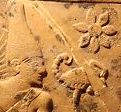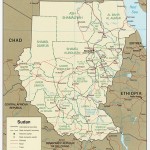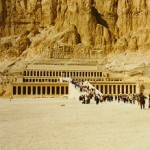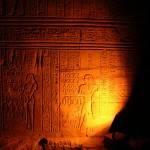Edition - December, 2011
Minor Menu Changes to Egyptological Site
As the site matures we are trying to make the ever-increasing amount of content easy to find. Over the next few months expect a few changes to various pages to try to make Egyptological even better and both quicker and easier to use. In today’s change, we have removed Colloquy from the menu (although the […] [more…]
Editorial – Journal Edition 2 and Magazine Edition 3
Welcome to our latest editions of the Journal and Magazine sections. There is a great mixture of topics, which we hope will provide something for everyone. In the Journal section Etienne Vande Walle has contributed more of his research into the legal terminology of Ancient Egypt, this time focusing on the significance of two titles […] [more…]
Comparison of the stelae of wsrimn (Fisher Collection, Detroit) and of ddwsbk (Louvre C240 and BM566) of Dynasty XII
Abstract
The 12th Dynasty (Middle Egytian) judicial system was surprisingly modern in its approach and composition, but our knowledge is assembled by a process of deduction. Most of the key evidentiary sources are testimonial stelae which list the titles held by senior officials during their lifetimes. The nature of an individual’s role in the judicial process can be postulated from the combination of titles held, in turn allowing a picture of the overall operation of kingly justice to emerge. “The paper considers the titles and history of two such individuals, comparing and contrasting the titles they held to build a picture which reveals the existence of investigative judicial processes. [more…]

Who Is King Scorpion?
Abstract
The ‘Scorpion’ Mace-head is one of the most significant objects from the main deposit at Hierakonpolis. Unlike the Narmer Mace-head, it is not a complete mace-head but only part of one. Apart from the dominant figure after whom the palette is named, the surrounding scenes are partial; however excellently these have been conserved. This makes the object even more enigmatic and difficult to interpret than usual in the context of the development of Early Dynastic royal iconography. [more…]
This article re-examines the evidence and suggests an alternative identification for King Scorpion. [more…]

The contributions of A.J. Arkell to eastern Saharan prehistory
Abstract
Anthony John Arkell (1898 – 1979) was a pioneer of Sudanese archaeology, a precise and conscientious surveyor and excavator whose publications are still invaluable today. His work provided the framework within which conversations about the prehistory of the Sudan are discussed. When he returned to live and work in England Arkell was responsible for restoring the collections of the Petrie Museum of Egyptian Archaeology, its contents having been packed into 800 boxes during the Second World War. He went on to research and write about the Egyptian Predynastic, helping to revive interest in the pre-Pharaonic period. Anthony Arkell’s contribution to the archaeology of the Eastern Sahara is explored with reference to both his own publications and to comments made by other researchers about the range and value of his work. [more…]

An Introduction to The Coptic Period in Egypt. The Early Christian era 1st Century AD – 7th Century AD
By Howard Middleton-Jones. Published on Egyptological, Magazine Edition 3, December 7th 2011. First in an occasional series about Coptic heritage by Howard Middleton-Jones. Introduction The Middle East is a region of remarkable achievements, captured in literature from the 19th century onwards, often expressed in superlative terms. Readers will be familiar with the ‘Cradle of […] [more…]
AWT Conference 2011 Review: Glass Faience and Pottery Making at Amarna (Paul Nicholson)
O45.1: An Ancient Industrial Estate Review by Kate Phizackerley. Published on Egyptological, Magazine Reviews, Edition 3, 7th December 2011 Introduction As described in the overview of the 2011 AWT Conference which I co-authored with Andrea Byrnes (see bottom of this review), Dr Paul Nicholson spoke about his excavation of the Amarna site designated O45.1, which […] [more…]
AWT Conference 2011 Review: Curse of the Pharaoh’s DNA (Jo Marchant)
Review by Kate Phizackerley. Published on Egyptological, Magazine Reviews, 7th December 2011 (Edition 3). Introduction Many people were looking forward to hearing Jo Marchant speak about the DNA tests undertaken by Drs Zink, Pusch et al, and she didn’t disappoint. She was an outstanding speaker. She opened her talk by describing DNA itself, a […] [more…]
 By Kate Phizackerley
By Kate Phizackerley
